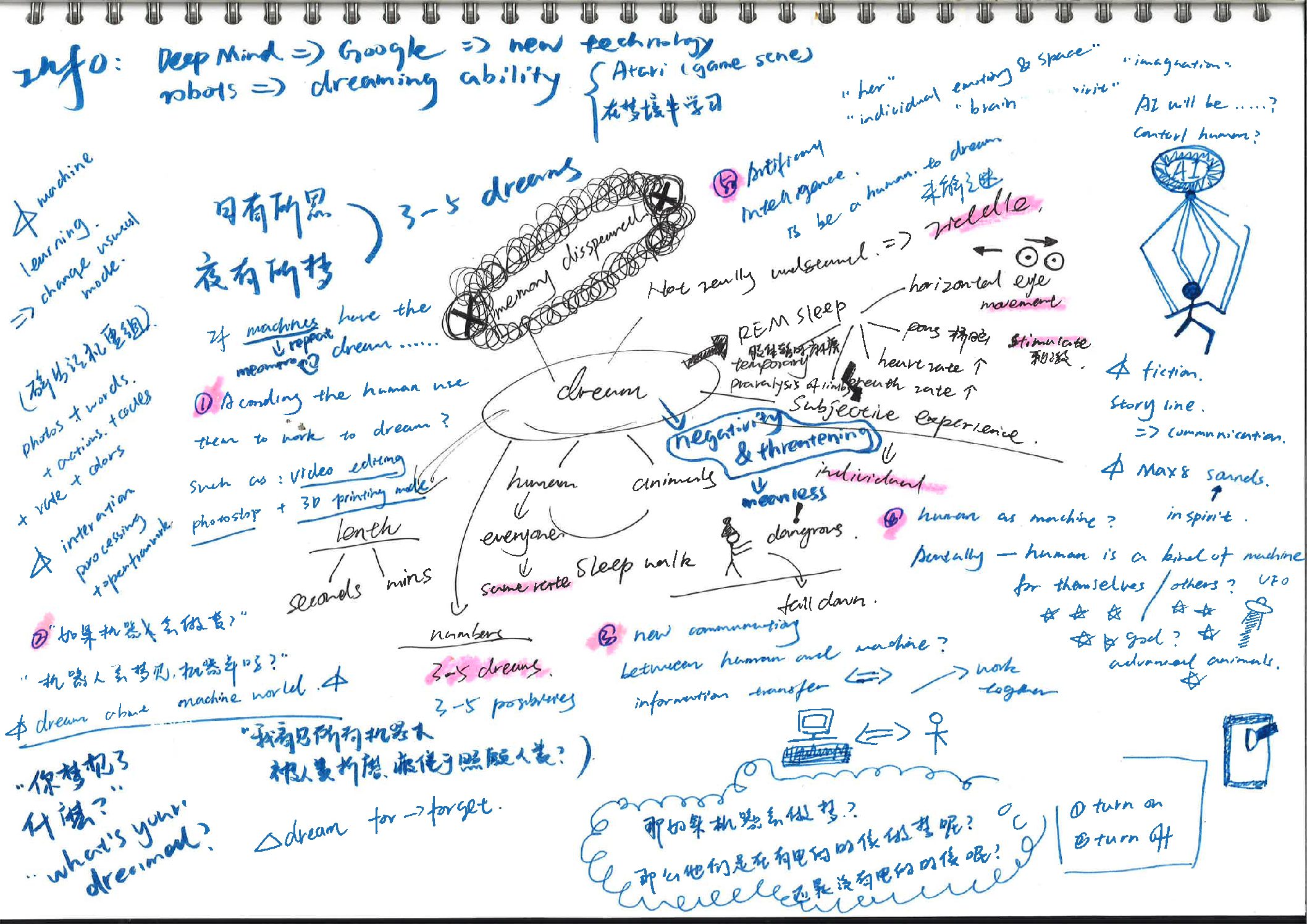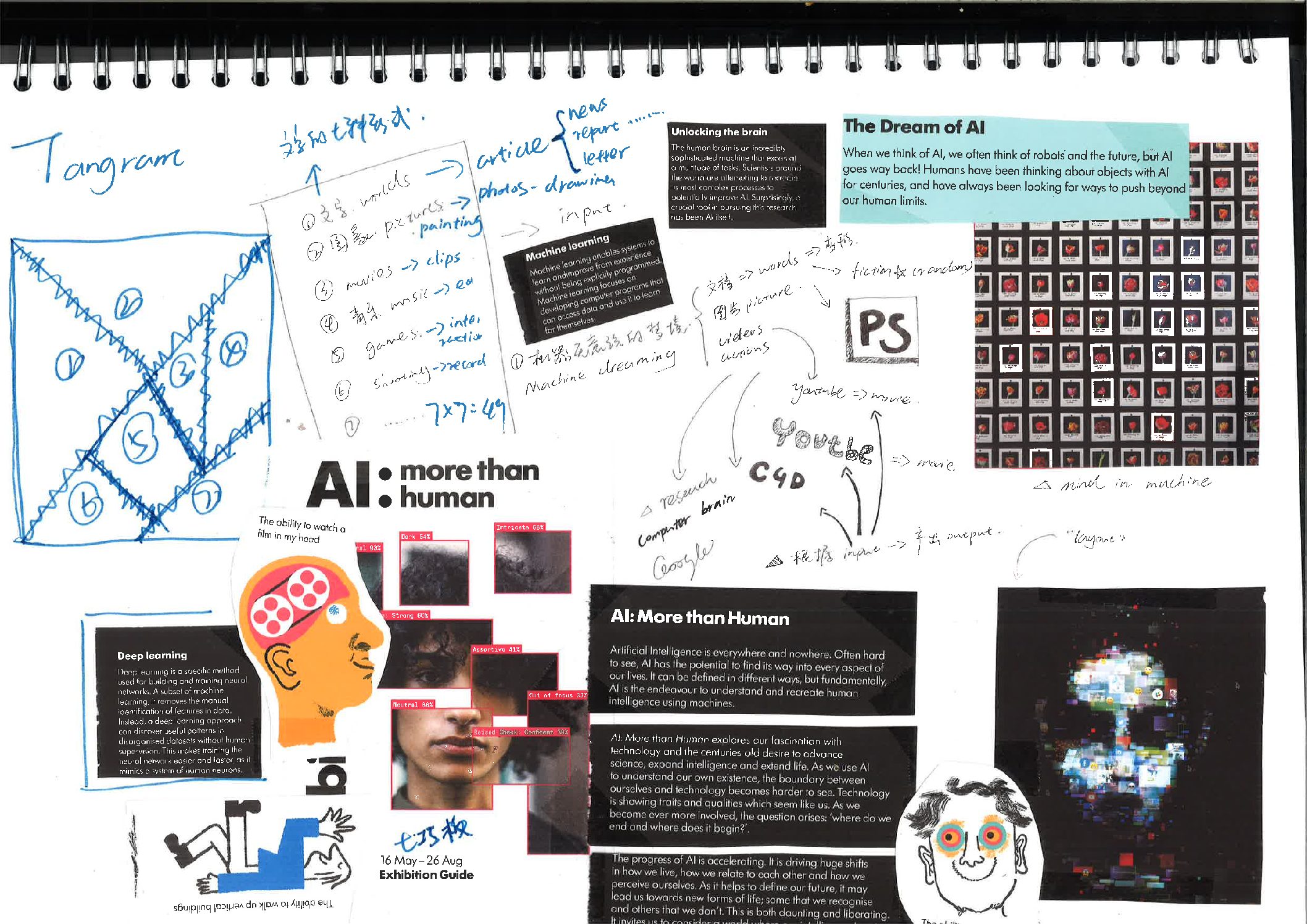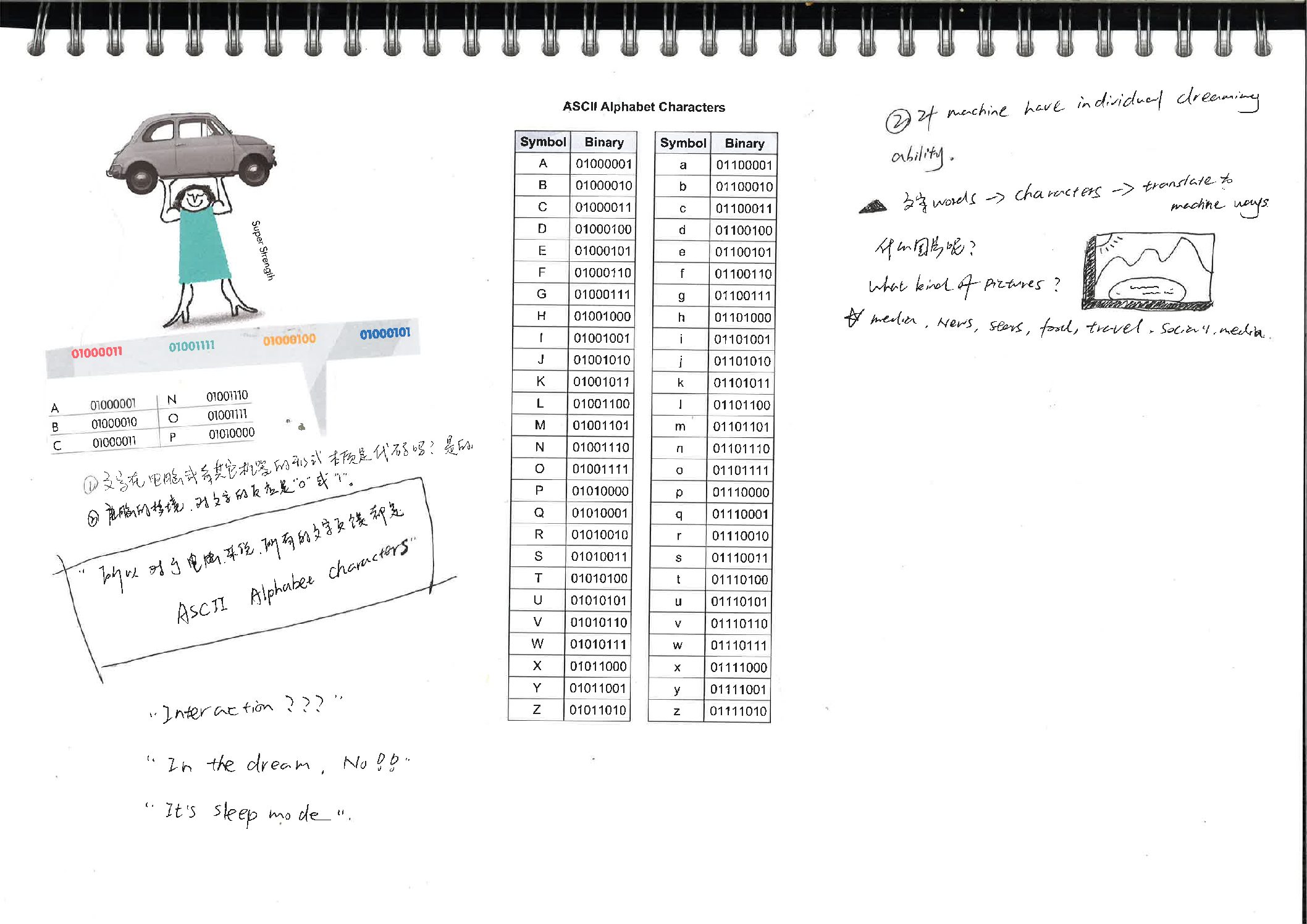The Dream Of Machine
An immersive space in a form of the mapping, exploring the relationship between human and machine, but also how technology might become an extension of physical virtual reality. As we create technologies, these code become carriers of our intentions, and hence extensions of them.
produced by: Yiyan Lin
Concept
I have a hobby, is often on the Internet, search and see the people describe their many strange dreams. Because I am a person who rarely dreams, I have no memory of dreams almost every night. In July of this year, I spent every day mulling over the theme of my final project. Until one day at noon, I took a nap and had a dream, I am still very impressed. The dream felt very real to me. In this dream, My white teeth turned black. I tried to wake up from the dream and realized I was still dreaming. I realized it was a dream within a dream. When I woke up, and my mind was back to reality, I began to wonder, if computers could dream, and machines could imagine, what kind of dreams would they have?
Background research
I started researching dreams. A dream is an individual subjective experience, an imaginary image, sound, thought or feeling, usually involuntary, that is produced during certain stages of sleep. The content, mechanism and function of dreams have not been truly understood. But since prehistoric times they have been a subject of philosophical and religious interest and have given rise to many scientific conjectures. The Scientific Study of dreams is called oneirology. many people believe that dreams can happen to other animals as well.
Dreams occur mainly during rem sleep, a light sleep state that occurs late in sleep. It is characterized by rapid horizontal eye movements, Pontine stimulation, increased breathing and heart rate, and temporary limb paralysis. Dreams may occur during other stages of sleep, but they are not real and challenging to remember.
Most scientists believe that all humans dream and have the same frequency each time they sleep. Therefore, if a person feels that they are not dreaming or that they have only one dream in one night.it is because their memory of those dreams has disappeared. This "memory wipe" usually occurs when a person is naturally released from rem sleep through slow-wave sleep into wakefulness. If a person is woken directly from REM sleep (such as by an alarm clock), they are more likely to remember the Rapid eye movement sleep dream (though not all rem dreams will be remembered,as a slow wave sleep is inserted between each rem, which causes the memory of the previous dream to disappear) . Dreams can be as long as a few seconds or as long as 20-30 minutes. On average, humans have 3-5 dreams a night, some as many as 20. In modern times, dreams are considered to be channels of communication with the subconscious mind. The content of the dream may be very ordinary, normal, or extremely surrealism. Dreams can have a variety of themes, including fear, excitement, magic, depression, adventure, or sex. What happens in a dream is not under the control of the dreamer, except in lucid dreams, when the dreamer becomes self-aware. Sometimes dreams can be creative or inspirational.
Since there's an old Chinese saying that you think about something every day and dream about it every night, I started to assume that if a machine could dream. Would the dream of the machine have anything to do with what humans are using it for during the day? Do Machines Dream of characters and words in movies at night, like a word document or a film on a computer? I classify machine dreams into four categories: 1: Text, 2: Image, 3: Sound, 4: Image. And then go on to research, and set aside artificial intelligence and machine learning, and treat computers like TV tools, only used by humans, not learning on their own.Is just a simple computer, then because of the binary system, all the words and symbols and sounds might not mean anything to the machine, only Zeros and ones.The base-2 numeral system is a positional notation with a radix of 2. Each digit is referred to as a bit. Because of its straightforward implementation in digital electronic circuitry using logic gates, the binary system is used by almost all modern computers and computer-based devices.
Technical
Technically, I used processing and openframworks and added a Kinect interactive device. I used openframworks and processing to create nearly ten different animated visual effects in a binary system to simulate a machine's dreams. According to human dream research, the average person dreams 2-5 dreams a night, so I also set my robot dream theme to 2-7 dream effects that rotate regularly.
In terms of presentation, I wanted to create an immersive space where the viewer can more or less feel the "dream". With the curtain as the boundary, I built an area about 4 meters long, 4 meters wide and 3 meters high. Seven layers of projection yarns are suspended in the middle of the space, and a visual effect made with processing and the open framework is projected onto the yarns. Let the viewer be free to shuttle between different layers of yarn to feel the "dream". And in the left corner, there's a Kinect. If the Kinect detect a people, the people will be projected onto the veil and sees his or her body become zero and one. Because assuming that a machine can dream, then the dream of the machine should be in its storage space, should be able to be found by humans, and find itself in the dream of the machine like this.
Future development
For the future, I think we can try more levels of projection, make the bigger version. May can try to make people interact with the Kinect from different directions. For example, let a person lie under a projection screen and let the projector mapping down from the ceiling onto a person. Or can have someone stand in the centre and the Projector mapping in four different directions.
Self evaluation
The final project was presented, and the audience's review was better than I expected, and it was mostly a success. The downside is that not mapping on an all-black field to get better results. The Kinect interactive device was not what I had in mind at first, as live's interactive device might be unstable and not suitable for exhibition. But in keeping with the concept, I added interactive devices. I still need to do more research and study on interaction technology. Add more effects and vibes may get better grades.
References
Jumping characters. openFrameworks
Nosy characters. openFrameworks
Rotate ‘A’. openFrameworks
Random characters. openFrameworks
Rotating alphabet. openFrameworks
Random characters. openFrameworks


































































